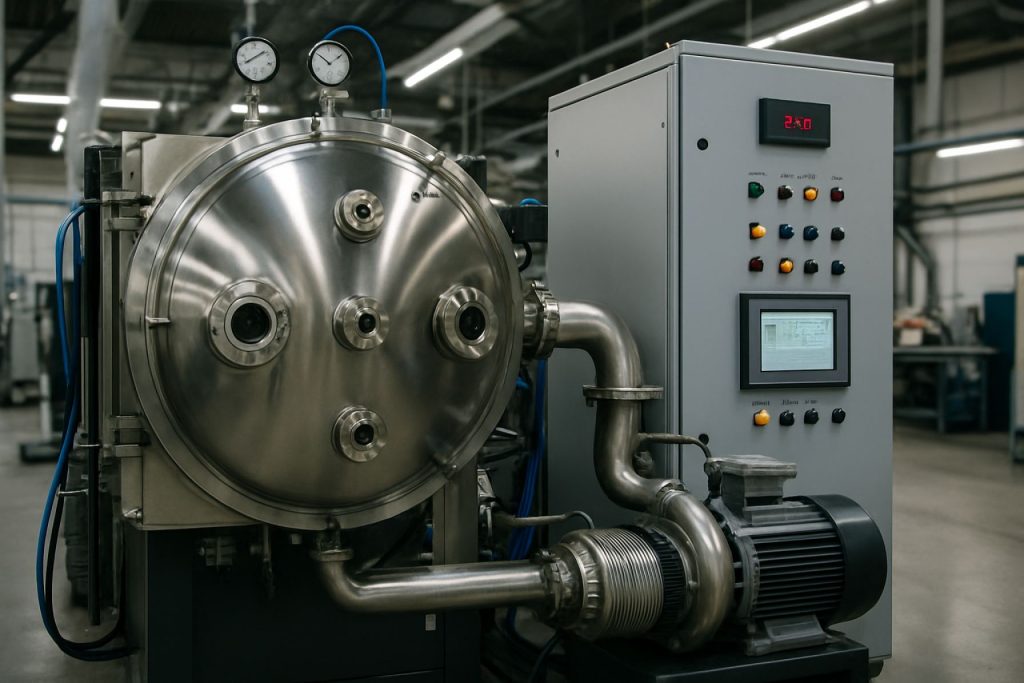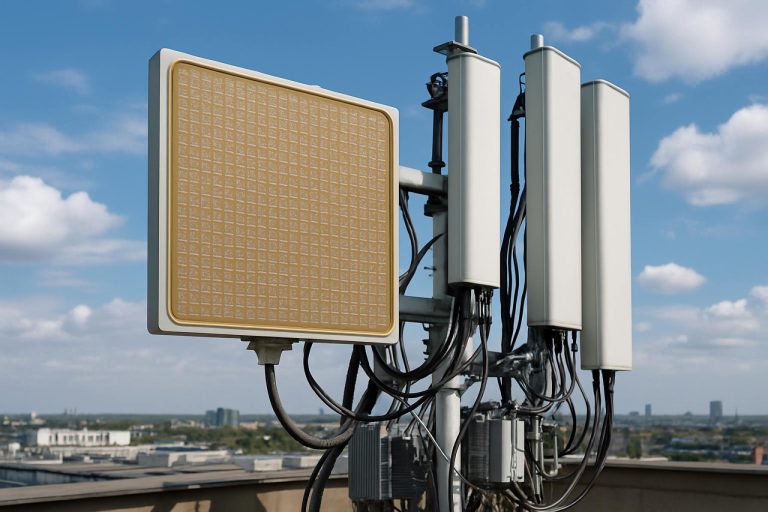
Advanced Vacuum Coating Technologies Market Report 2025: In-Depth Analysis of Growth Drivers, Innovations, and Global Opportunities. Explore Market Size, Key Players, and Strategic Forecasts for the Next Five Years.
- Executive Summary & Market Overview
- Key Technology Trends in Advanced Vacuum Coating
- Competitive Landscape and Leading Players
- Market Growth Forecasts (2025–2030): CAGR, Revenue, and Volume Analysis
- Regional Market Analysis: North America, Europe, Asia-Pacific, and Rest of World
- Future Outlook: Emerging Applications and Investment Hotspots
- Challenges, Risks, and Strategic Opportunities
- Sources & References
Executive Summary & Market Overview
Advanced vacuum coating technologies refer to a suite of sophisticated processes used to deposit thin films and coatings onto substrates under vacuum conditions. These technologies, including physical vapor deposition (PVD), chemical vapor deposition (CVD), atomic layer deposition (ALD), and others, are critical for enhancing surface properties such as hardness, corrosion resistance, optical performance, and electrical conductivity. As of 2025, the global market for advanced vacuum coating technologies is experiencing robust growth, driven by expanding applications across electronics, automotive, aerospace, energy, and medical devices.
According to MarketsandMarkets, the vacuum coating market is projected to reach USD 45.2 billion by 2025, growing at a CAGR of 6.2% from 2020. This growth is underpinned by the surging demand for high-performance coatings in semiconductor manufacturing, display technologies, and solar photovoltaics. The proliferation of 5G infrastructure, electric vehicles, and miniaturized medical devices further accelerates the adoption of advanced vacuum coating solutions.
Regionally, Asia-Pacific dominates the market, accounting for over 45% of global demand, led by manufacturing powerhouses such as China, Japan, South Korea, and Taiwan. These countries benefit from strong electronics and automotive sectors, as well as significant investments in renewable energy. North America and Europe follow, with a focus on high-value applications in aerospace, defense, and healthcare, supported by ongoing R&D and stringent regulatory standards.
Key industry players, including OCSiAl, Leybold, ULVAC, and Advanced Energy, are investing in next-generation vacuum coating systems that offer improved process control, energy efficiency, and scalability. Technological advancements such as plasma-enhanced processes, roll-to-roll coating, and digital monitoring are enabling manufacturers to meet the evolving requirements of high-growth sectors.
Despite the positive outlook, the market faces challenges including high capital investment, technical complexity, and the need for skilled operators. However, ongoing innovation and the integration of automation and AI-driven process optimization are expected to mitigate these barriers, ensuring sustained market expansion through 2025 and beyond.
Key Technology Trends in Advanced Vacuum Coating
Advanced vacuum coating technologies are rapidly evolving, driven by the demand for higher performance, energy efficiency, and sustainability across industries such as electronics, automotive, optics, and renewable energy. In 2025, several key technology trends are shaping the landscape of advanced vacuum coating:
- Atomic Layer Deposition (ALD) and Molecular Layer Deposition (MLD): ALD and MLD are gaining traction for their ability to produce ultra-thin, conformal coatings with atomic-level precision. These techniques are particularly valuable in semiconductor manufacturing, flexible electronics, and barrier coatings for batteries and OLED displays. The adoption of ALD is expected to accelerate, with the global ALD market projected to reach $5.2 billion by 2025, according to MarketsandMarkets.
- High Power Impulse Magnetron Sputtering (HiPIMS): HiPIMS is emerging as a preferred method for depositing dense, high-quality films with superior adhesion and tailored properties. Its applications span cutting tools, medical devices, and decorative coatings. The technology’s ability to deposit complex multi-layer and nanocomposite coatings is driving its adoption, as highlighted by AIMCAL.
- Roll-to-Roll (R2R) Vacuum Coating: R2R processes are enabling high-throughput, cost-effective production of coated flexible substrates for applications such as solar cells, flexible displays, and packaging. The integration of R2R with advanced monitoring and control systems is enhancing process reliability and scalability, as noted by Fraunhofer Institute.
- Plasma-Enhanced Chemical Vapor Deposition (PECVD): PECVD continues to be a cornerstone for depositing functional coatings at lower temperatures, making it suitable for temperature-sensitive substrates. Innovations in plasma sources and precursor chemistry are expanding its use in photovoltaics, optical coatings, and protective layers, according to IDTechEx.
- Green and Sustainable Coating Processes: Environmental regulations and corporate sustainability goals are driving the development of eco-friendly vacuum coating processes. This includes the reduction of hazardous precursors, energy-efficient equipment, and recycling of process gases, as reported by OECD.
These technology trends are not only enhancing the performance and functionality of coated products but are also enabling new applications and business models in the advanced vacuum coating sector for 2025 and beyond.
Competitive Landscape and Leading Players
The competitive landscape for advanced vacuum coating technologies in 2025 is characterized by a mix of established multinational corporations and innovative niche players, each leveraging proprietary technologies to address the evolving demands of industries such as electronics, automotive, aerospace, and renewable energy. The market is highly dynamic, with companies focusing on expanding their portfolios through R&D, strategic partnerships, and acquisitions to maintain a competitive edge.
Leading players in this sector include Leybold GmbH, ULVAC, Inc., OCSiAl, Advanced Energy Industries, Inc., and Bühler Group. These companies are recognized for their comprehensive product offerings, global reach, and significant investments in next-generation vacuum coating solutions such as atomic layer deposition (ALD), physical vapor deposition (PVD), and chemical vapor deposition (CVD).
For instance, ULVAC, Inc. has strengthened its position by introducing high-throughput, energy-efficient vacuum coating systems tailored for semiconductor and display manufacturing. Leybold GmbH continues to innovate in vacuum pump technology, which is critical for achieving the ultra-high vacuum conditions required in advanced coating processes. Bühler Group has expanded its vacuum coating solutions for the automotive and packaging sectors, focusing on sustainability and process automation.
The market also features strong regional players and specialized firms such as PLATIT AG and IHI Ionbond AG, which focus on high-performance coatings for cutting tools and medical devices. These companies differentiate themselves through customized solutions and close collaboration with end-users.
Strategic collaborations and mergers are shaping the competitive landscape. For example, Advanced Energy Industries, Inc. has pursued acquisitions to broaden its vacuum process power solutions, while partnerships between equipment manufacturers and material suppliers are accelerating the development of novel coating materials and processes.
Overall, the advanced vacuum coating technologies market in 2025 is marked by intense competition, rapid technological advancements, and a strong emphasis on sustainability and process efficiency. Market leaders are expected to maintain their dominance through continuous innovation, global expansion, and customer-centric strategies.
Market Growth Forecasts (2025–2030): CAGR, Revenue, and Volume Analysis
The global market for advanced vacuum coating technologies is poised for robust growth between 2025 and 2030, driven by expanding applications in electronics, automotive, aerospace, and renewable energy sectors. According to projections from MarketsandMarkets, the vacuum coating market is expected to register a compound annual growth rate (CAGR) of approximately 6.5% during this period. This growth is underpinned by increasing demand for high-performance coatings that enhance durability, conductivity, and optical properties of substrates.
Revenue forecasts indicate that the global advanced vacuum coating technologies market will surpass USD 45 billion by 2030, up from an estimated USD 32 billion in 2025. This surge is attributed to the rapid adoption of physical vapor deposition (PVD) and chemical vapor deposition (CVD) techniques in semiconductor manufacturing, as well as the proliferation of thin-film solar panels and advanced optical devices. Grand View Research highlights that the Asia-Pacific region, particularly China, Japan, and South Korea, will account for the largest share of market revenue, fueled by significant investments in electronics and automotive production.
In terms of volume, the market is projected to witness a steady increase in the number of vacuum coating systems deployed, with annual installations expected to grow at a CAGR of 5.8% from 2025 to 2030. The proliferation of consumer electronics, such as smartphones and wearables, is a key driver, as manufacturers seek advanced coatings for improved scratch resistance and energy efficiency. Additionally, the automotive sector’s shift toward electric vehicles is accelerating demand for coated components that offer enhanced corrosion resistance and thermal management.
- Key growth drivers: Expansion of semiconductor fabrication, rising adoption of energy-efficient coatings, and technological advancements in deposition equipment.
- Emerging trends: Integration of atomic layer deposition (ALD) for ultra-thin films, and increased use of eco-friendly coating materials.
- Regional outlook: Asia-Pacific remains the dominant market, while North America and Europe are expected to see above-average growth due to investments in renewable energy and aerospace.
Overall, the advanced vacuum coating technologies market is set for significant expansion through 2030, with both revenue and volume metrics reflecting strong industry momentum and innovation-driven demand.
Regional Market Analysis: North America, Europe, Asia-Pacific, and Rest of World
The global market for advanced vacuum coating technologies is experiencing robust growth, with regional dynamics shaped by industrial demand, technological innovation, and regulatory frameworks. In 2025, North America, Europe, Asia-Pacific, and the Rest of the World (RoW) each present distinct opportunities and challenges for market participants.
North America remains a key hub for advanced vacuum coating, driven by strong investments in semiconductor manufacturing, aerospace, and automotive sectors. The United States, in particular, benefits from a mature R&D ecosystem and the presence of major industry players. The region’s focus on high-value applications—such as optical coatings, medical devices, and energy-efficient architectural glass—continues to spur demand. According to SEMI, North American semiconductor equipment billings reached record highs in 2024, underpinning the need for advanced vacuum deposition solutions.
Europe is characterized by stringent environmental regulations and a strong emphasis on sustainability, which is accelerating the adoption of eco-friendly vacuum coating processes. Germany, France, and the UK lead the region, leveraging their advanced manufacturing bases and investments in renewable energy technologies. The European Union’s Green Deal and related initiatives are fostering innovation in low-emission coating technologies, particularly for automotive and solar panel applications. Data from VDMA highlight a steady increase in demand for vacuum coating equipment in the region’s precision engineering and optics industries.
- Asia-Pacific is the fastest-growing market, propelled by rapid industrialization, expanding electronics manufacturing, and government incentives. China, Japan, South Korea, and Taiwan dominate, with China accounting for a significant share of new vacuum coating installations. The proliferation of consumer electronics, electric vehicles, and photovoltaic cells is driving large-scale adoption. According to Statista, Asia-Pacific’s share of global semiconductor fabrication capacity is expected to exceed 60% in 2025, directly boosting demand for advanced vacuum coating technologies.
- Rest of World (RoW) includes emerging markets in Latin America, the Middle East, and Africa. While these regions currently represent a smaller share of the global market, investments in infrastructure, energy, and local manufacturing are gradually increasing. Countries such as Brazil and the UAE are exploring advanced vacuum coating for solar energy and architectural applications, as reported by International Energy Agency (IEA).
Overall, regional market trends in 2025 reflect a convergence of technological advancement, sector-specific demand, and policy-driven innovation, positioning advanced vacuum coating technologies for continued global expansion.
Future Outlook: Emerging Applications and Investment Hotspots
Looking ahead to 2025, advanced vacuum coating technologies are poised for significant expansion, driven by their critical role in enabling next-generation applications across multiple industries. The convergence of miniaturization, sustainability imperatives, and performance demands is accelerating the adoption of sophisticated vacuum deposition methods such as atomic layer deposition (ALD), plasma-enhanced chemical vapor deposition (PECVD), and magnetron sputtering.
Emerging applications are particularly prominent in the semiconductor, renewable energy, and medical device sectors. In semiconductors, the transition to sub-5nm nodes and 3D architectures is intensifying demand for ultra-thin, conformal coatings with atomic-level precision. ALD and advanced sputtering techniques are expected to see robust investment as chipmakers seek to overcome scaling challenges and improve device reliability Applied Materials. In photovoltaics, vacuum coatings are central to the development of high-efficiency perovskite and tandem solar cells, with companies investing in scalable roll-to-roll vacuum deposition systems to reduce costs and boost throughput First Solar.
Medical devices represent another investment hotspot, as biocompatible and antimicrobial coatings become essential for next-generation implants and diagnostic tools. The demand for vacuum-deposited diamond-like carbon (DLC) and titanium nitride coatings is rising, driven by regulatory requirements and the need for enhanced device longevity Boston Scientific.
Geographically, Asia-Pacific remains the epicenter of investment, led by China, South Korea, and Taiwan, where government incentives and robust electronics manufacturing ecosystems are fostering rapid technology adoption. North America and Europe are also witnessing increased R&D spending, particularly in automotive (for lightweight, wear-resistant coatings) and aerospace (for thermal barrier and anti-corrosion applications) Oxford Instruments.
- Flexible electronics: Vacuum coating is enabling the production of flexible displays and wearable sensors, with major investments in transparent conductive oxide (TCO) and barrier layer technologies.
- Energy storage: Advanced coatings are being developed for lithium-ion and solid-state batteries to improve cycle life and safety.
- Optical coatings: The rise of AR/VR and advanced photonics is driving demand for precision multilayer coatings with tailored optical properties.
Overall, the future outlook for advanced vacuum coating technologies in 2025 is characterized by rapid innovation, cross-sectoral investment, and a shift toward high-value, application-specific solutions. Strategic partnerships and M&A activity are expected to intensify as companies seek to secure technological leadership in this dynamic market MarketsandMarkets.
Challenges, Risks, and Strategic Opportunities
Advanced vacuum coating technologies, encompassing methods such as physical vapor deposition (PVD), chemical vapor deposition (CVD), and atomic layer deposition (ALD), are pivotal in industries ranging from semiconductors to automotive and renewable energy. However, the sector faces a complex landscape of challenges and risks, even as it presents significant strategic opportunities for stakeholders in 2025.
One of the primary challenges is the high capital expenditure required for state-of-the-art vacuum coating equipment and cleanroom infrastructure. The cost barrier can limit adoption, particularly among small and medium-sized enterprises. Additionally, the rapid pace of technological innovation necessitates continuous investment in R&D to keep pace with evolving substrate materials, miniaturization trends, and the demand for higher coating precision and uniformity. This is especially pronounced in the semiconductor and display industries, where tolerances are extremely tight and defect rates must be minimized (SEMI).
Supply chain vulnerabilities also pose risks. The advanced vacuum coating sector relies on a stable supply of high-purity target materials and specialty gases, which are subject to geopolitical tensions and market fluctuations. Disruptions can lead to production delays and increased costs, as seen during recent global supply chain crises (Gartner).
Environmental and regulatory pressures are intensifying. Vacuum coating processes can involve hazardous chemicals and generate waste that must be managed in compliance with increasingly stringent environmental standards, particularly in the EU and North America. Companies must invest in greener technologies and waste mitigation strategies to maintain market access and avoid regulatory penalties (U.S. Environmental Protection Agency).
Despite these challenges, strategic opportunities abound. The push for energy-efficient electronics, advanced optics, and sustainable packaging is driving demand for innovative coatings with enhanced properties such as anti-reflectivity, scratch resistance, and barrier performance. The growth of electric vehicles and solar photovoltaics further expands the addressable market for advanced coatings (International Energy Agency). Companies that can deliver scalable, cost-effective, and environmentally friendly solutions are well-positioned to capture market share.
Strategic partnerships, vertical integration, and investment in digitalization (e.g., AI-driven process optimization) are emerging as key levers for mitigating risks and capitalizing on new growth avenues in the advanced vacuum coating technologies market in 2025.
Sources & References
- MarketsandMarkets
- OCSiAl
- Leybold
- ULVAC
- Advanced Energy
- Fraunhofer Institute
- IDTechEx
- Bühler Group
- PLATIT AG
- Grand View Research
- VDMA
- Statista
- International Energy Agency (IEA)
- First Solar
- Oxford Instruments



